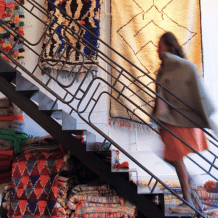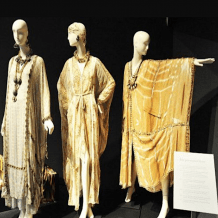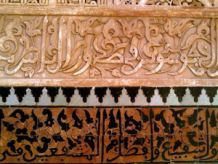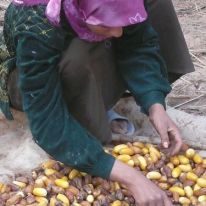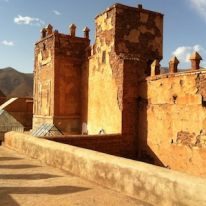
Eid Al Adha is the annual celebration to honor the Islamic prophet and to commemorate the holy month of Ramadan. The day can be compared to Christmas in the United States. It is a time where family and community join together. This “grand festival” also known as Aid el Adha takes place 68 days after Aid es Seghir, commemorates the day that when by divine order Abraham prepared to sacrifice his son, Ismail, when Allah interceded by providing a ram in place of a child.
Every household sacrifices a sheep and shares the meat at a family meal. In Berber villages, families celebrate by putting on their best clothes and the women adorn themselves in Henna. Each fortified village and family open their home to other families and children offering almonds and mint tea to others who come to celebrate. Children in villages often go from house to house to wish each family “Eid Mubarak.” (Happy New Year)
Both Ramadan and Eid Al Adha follow the Muslim lunar calendar; this year it is celebrated on August 12th, 2019. On this day, a lamb or goat is provided for sacrifice.
In the Quaran, the story is written that Ibrahim was spared from sacrificing his son. In his place, a lamb was used instead. The offering is then used for roasts, as the base of stews, and barbecues. A third of each animal is also given away to the poor. Although this tradition is centuries old, international and local animal activists have begun to criticize this aspect of the holiday.
In response to these complaints, on July 24th, 2019, the Moroccan Secretary of State for Sustainable Development launched the “Clean Eid Al Adha” campaign. Among many things, the campaign will place increased importance on keeping the sacrifice area clean and properly disposing of the animal. Additionally, the campaign encourages animal owners to collect and re-use the hides in Morocco’s leather industry. According to the State Secretary for Sustainable Development, “up to 85% of the skins could not be re-used in the past.” The new initiative hopes to change this.
Visitors to Morocco who want to learn more about the leather industry can visit Fes. The North-Eastern city is referred to as Morocco’s spiritual capital and has three famous tanneries. The Chouara Tannery dates back to the 11th century and is considered the largest. It is located in the oldest part of the medina, Fes El Bali near the Saffarin Madrasa River.

